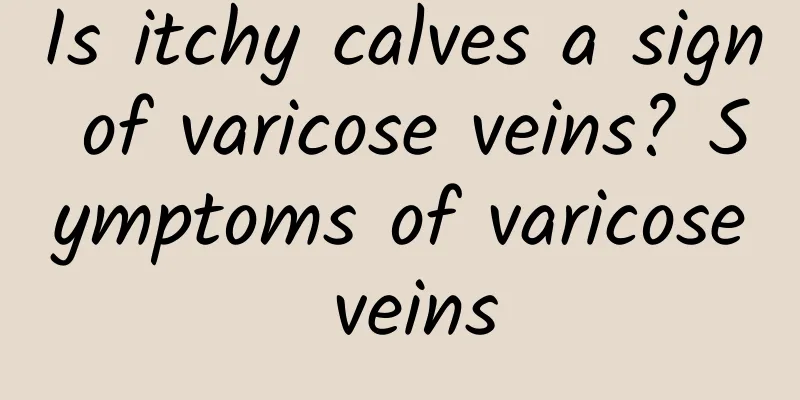Is itchy calves a sign of varicose veins? Symptoms of varicose veins

|
If you suffer from varicose veins in your calves, the appearance of your calves will change. In addition, you may also experience soreness, swelling, discomfort, and pain. Itching is also one of the precursors of varicose veins, so when your calves itch, you must be vigilant, as this may be a precursor to the disease. 1. Appearance Change In the affected limbs, especially the calves, the superficial veins bulge, dilate, bend, and even curl into a ball, which is more obvious when standing. For patients with a long course of disease, the elasticity of the venous wall is lost, part of the venous wall becomes thinner and dilated, appearing as venous nodules on the surface of the body, while the other part of the venous wall thickens, forming uneven nodules. 2. Discomfort and pain Soreness and discomfort are the most common symptoms of varicose veins in the lower limbs. Patients often feel swelling, heaviness or pain in the affected limb, and are easily fatigued and weak. It often gets worse after walking or exertion and gets better after rest. Symptoms are milder in the morning and more severe in the afternoon and evening after a day of activity. People with sensitive senses may experience pain in the affected limb. In simple varicose veins, swelling is rarely present. If swelling occurs, it is usually caused by perforator vein insufficiency and may cause mild swelling of the ankle and calf. The swelling tends to increase at night and decrease or disappear after a night's rest. 4 Complications In the early stages of simple varicose veins, other than the obvious varicose veins on the body surface, other symptoms are not very serious. Many people only pay attention to varicose veins when their varicose veins continue to develop and complications occur. Common complications include nutritional changes in the skin, such as skin atrophy, itching, pigmentation, eczema and ulcer formation, which may also cause adverse consequences such as bleeding and thrombophlebitis. |
<<: Varicose veins in the lower leg: five aspects to pay attention to in treatment
>>: What are the symptoms of rheumatoid arthritis?
Recommend
TCM Diagnosis of Hysteria
What is the diagnosis of hysteria in traditional ...
How to treat cor pulmonale? Staged treatment is more effective
Cor pulmonale, also known as chronic pulmonary he...
Physical cooling methods for fever
Fever is a common disease like cold, and other ty...
How to treat habitual constipation
Habitual constipation is also very common. This k...
What are the traditional Chinese medicine treatments for aplastic anemia?
Aplastic anemia is a common disease of decreased ...
How to cook green bean water
Friends who often drink mung bean water must be v...
What causes chest herpes?
Herpes is a common virus that poses a great threa...
Effects of wasp venom
Wasp venom is mainly concentrated on the hornet&#...
How to treat renal artery aneurysm
Renal artery aneurysm is relatively common and is...
What are some health supplements that are good for your eyes?
In modern life, we need to use our eyes anytime a...
What are the signs of stretch marks?
Stretch marks are a common problem for pregnant w...
How many days of pregnancy can you use medicine to abort
If a female friend has an unexpected pregnancy an...
Why do gums recede?
The phenomenon of gum recession is medically know...
How to prevent vitiligo
If you suffer from vitiligo, go to the hospital f...
Middle-aged women must do this, if they don't do it, they will die early
There are things to do at different stages of lif...









